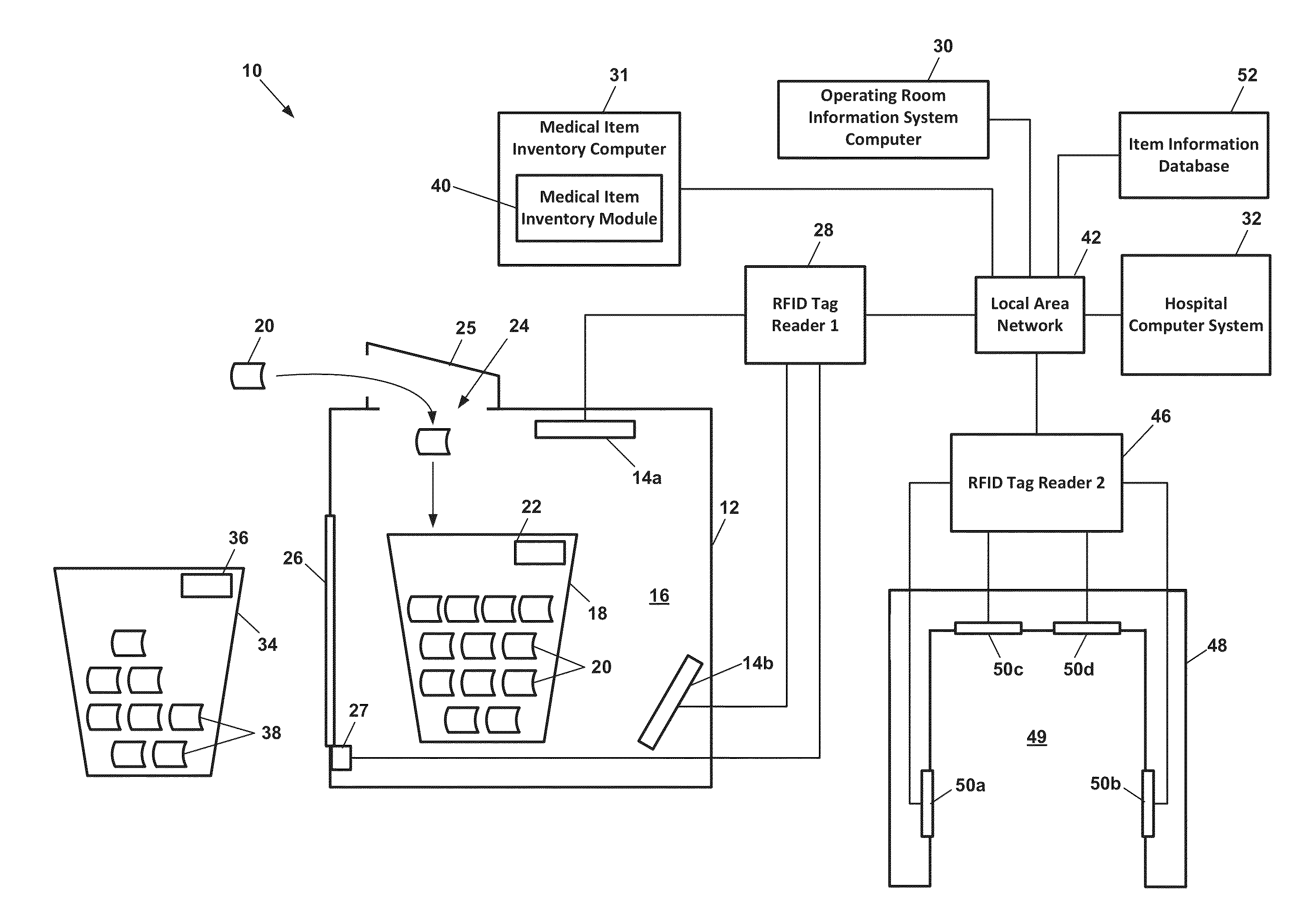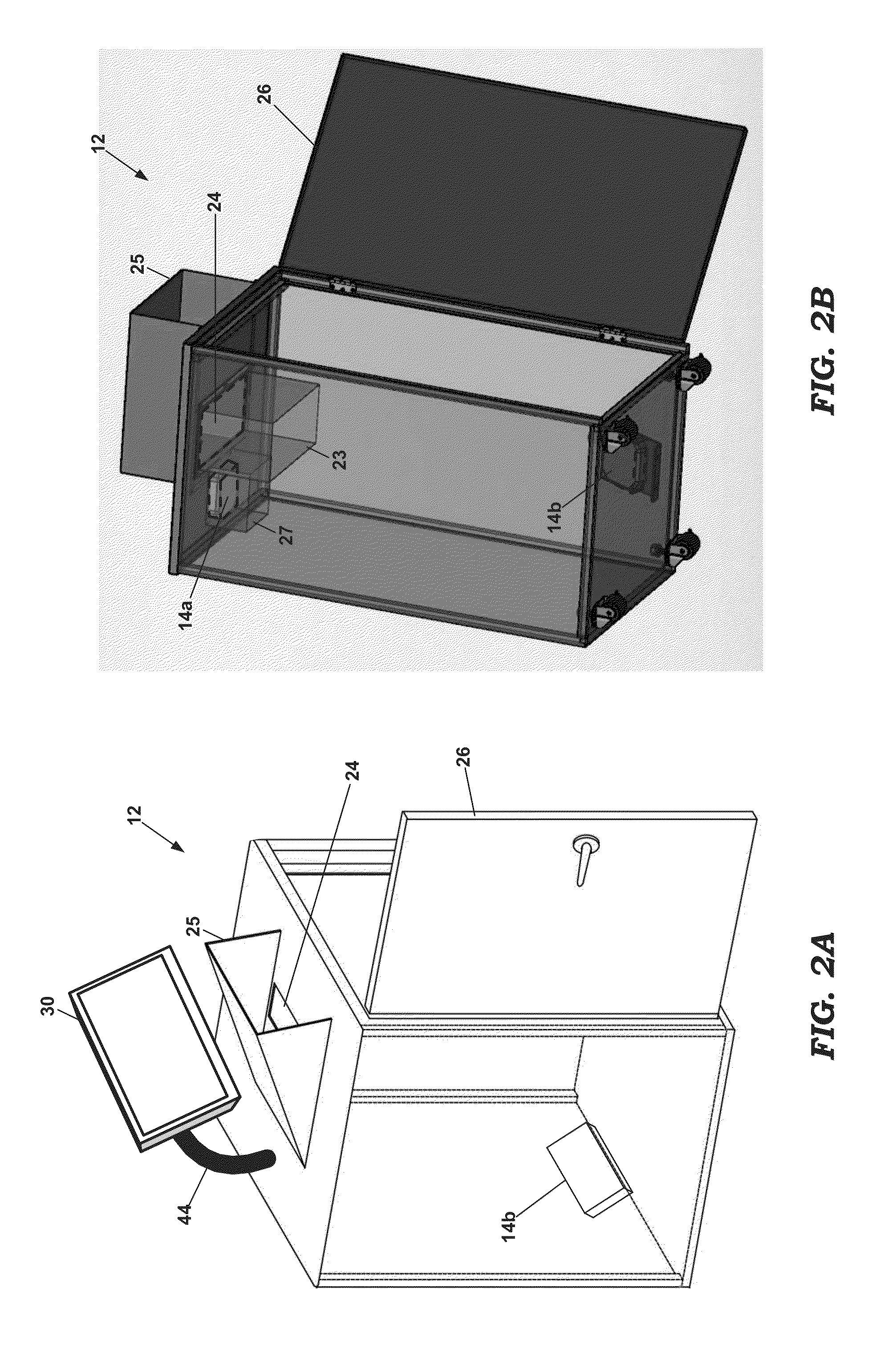System for Sensing and Recording Consumption of Medical Items During Medical Procedure
a technology for recording consumption and medical items, applied in the field of medical item inventory management, can solve the problems of loss of ability to accurately bill for all consumed supply items, inability to provide consistent data analysis of supply utilization and optimization, and difficulty in tracking supplies, etc., and achieve significant cost improvement. , the effect of accurately charging for the procedur
- Summary
- Abstract
- Description
- Claims
- Application Information
AI Technical Summary
Benefits of technology
Problems solved by technology
Method used
Image
Examples
Embodiment Construction
[0090]As the term is used herein, a “medical item” is an item, material or substance that is used or consumed during the performance of a medical procedure. For example, sponges, gloves and drapes are medical items. A surgical implant is another example of a medical item. Medical items comprise a subset of “medical resources.” As the term is used herein, a “medical resource” is any item, person, piece of equipment, or space involved in providing medical services for a patient. For example, a gurney on which a patient lies during a surgical procedure is a medical resource. The doctor performing the procedure, the attending nurses, and the patient are also medical resources. An operating room is a medical resource.
[0091]As shown in FIG. 1, a system 10 for sensing and logging consumption of medical items during a medical procedure includes a shielded enclosure 12 having a space 16 that is large enough to receive a waste bin 18. Disposed within the enclosure 12 are two RFID antennas 14a...
PUM
 Login to View More
Login to View More Abstract
Description
Claims
Application Information
 Login to View More
Login to View More - R&D
- Intellectual Property
- Life Sciences
- Materials
- Tech Scout
- Unparalleled Data Quality
- Higher Quality Content
- 60% Fewer Hallucinations
Browse by: Latest US Patents, China's latest patents, Technical Efficacy Thesaurus, Application Domain, Technology Topic, Popular Technical Reports.
© 2025 PatSnap. All rights reserved.Legal|Privacy policy|Modern Slavery Act Transparency Statement|Sitemap|About US| Contact US: help@patsnap.com



